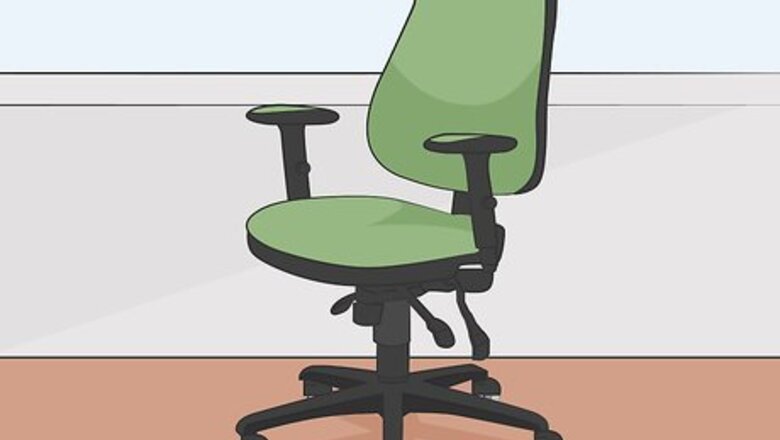
views
X
Research source
Correcting Your Posture

Choose a supportive chair to sit in while gaming. Generally, you need a chair with a harder seat so you don't find yourself slipping or slouching. This doesn't mean you can't sit on a couch, but beanbag chairs and similar seats don't provide enough support or allow you to sit with proper posture. An office or desk chair usually makes a good gaming chair. They're also adjustable so you can accommodate your height. If you spend a lot of time gaming, consider investing in an ergonomic gaming chair.
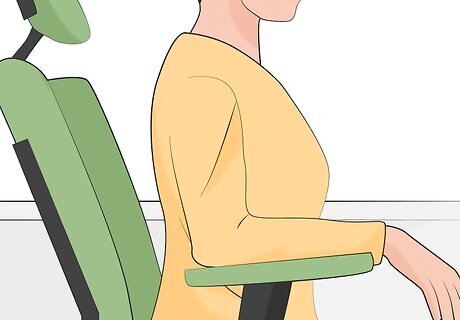
Keep your chest out and shoulders back. The ideal gaming posture is what's referred to as a "neutral" posture. Pull your chest up and out without arching your back—you'll feel your shoulders naturally fall back. Continue that movement by tilting your shoulders back slightly. You'll likely feel your shoulder blades move closer together in line with your spine. To maintain this posture, you typically need to be sitting on the front quarter of your chair—not necessarily on the edge of your seat, but forward. It's easy to start pulling forward as you play, but try to avoid hunching over, which can lead to back pain as well as headaches. If you prefer to sit all the way back in your chair and use the back of the chair for support, watch that you're not leaning into it. Hold yourself upright rather than depending on the back of your chair to do it for you.

Tuck your chin slightly to keep your neck straight. Lower your chin just slightly so that you're looking straight ahead, not up or down. Put your hand on the back of your neck to feel if it's straight. It can take some practice to get this right, especially if you're used to tilting your head a lot. A tilted neck is one of the main causes of tension headaches. If your head is tilted either forward or back, it strains the muscles in your neck. This muscle strain can lead to a tension headache, especially if you sit that way for an hour or longer.
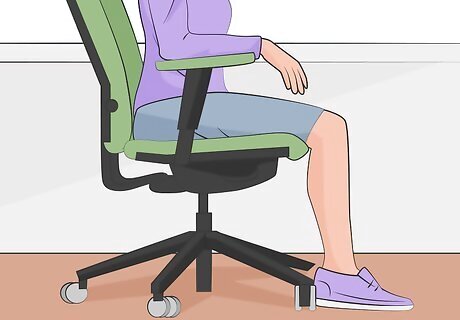
Sit with your feet flat on the floor. Place both feet flat on the floor in front of you. Make sure your knees are comfortably bent at right angles to keep your muscles balanced. Balanced muscles help you avoid strain. If the chair you normally sit in while gaming is too high and you can't adjust it, put a step stool or ottoman under your feet so you can maintain proper alignment.
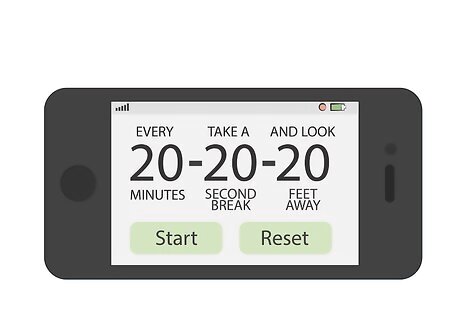
Set cues for yourself to remind you to check your posture. While you're playing, you'll likely find that you start leaning forward or perhaps slouching. Find the spots in your game where there isn't a lot of action that you can use as a trigger to check your posture. For example, if you play Teamfight Tactics, you could get in the habit of checking and correcting your posture every time you see the results screen. With role-playing games, you might check your posture at save points or while your character is sleeping.
Avoiding Eye Strain
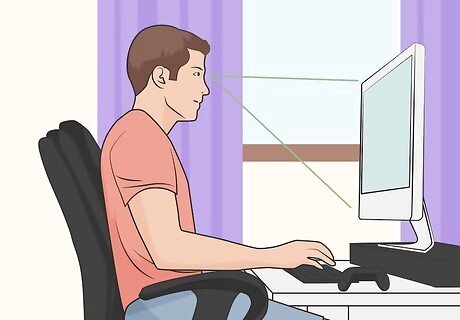
Adjust your screen so it's at eye level. Once you've got your chair set up for optimal posture, you'll probably find you need to adjust your screen so you can see it while you play. Raise or lower it so that your eyes are looking slightly down when you look at the center of the screen. This reduces eye strain, which is also responsible for a lot of gaming headaches. If you're playing at a TV that you can't move, this might cause difficulty. In that situation, focus on the angle instead. You may have to move back from the screen so that you can play without tilting your head. Regardless, keeping your neck straight is the most important part of the equation if you want to try to prevent headaches.
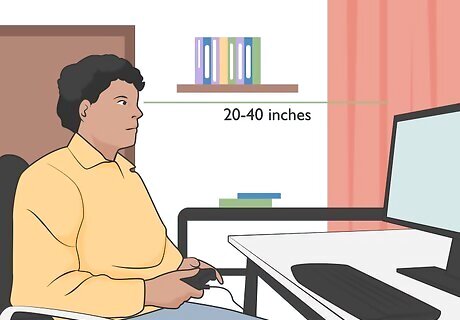
Keep your screen 20 to 40 inches (51 to 102 cm) away from your face. Sitting too close to the screen puts a lot of strain on your eyes, which can lead to headaches. If you sit close to the screen because you can't see details clearly, you might want to call an optometrist to see if glasses or contacts could help you. If you're playing video games on a larger screen, such as a TV, your ideal distance away from the screen will also depend on other factors, such as the height of the screen and the size of the room.
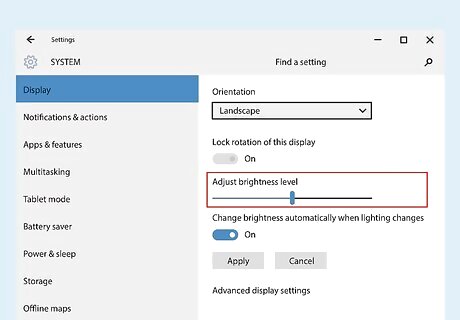
Tone down the brightness on your screen. Video games often have bright and color-dens graphics, which can also cause eye strain — especially if you have a high-definition TV or computer monitor. Toning down the brightness likely won't affect your gameplay or ability to see details very much, but it will be easier on your eyes. If you're leery about adjusting the brightness, try it for a few minutes as an experiment, then change it back. If you find yourself squinting or recoiling when you turn it back to its original brightness level, that level was straining your eyes. You can also tinker with the contrast to see if that helps.
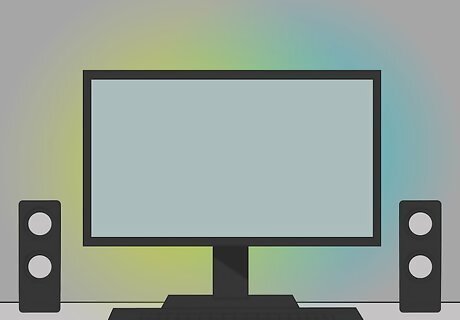
Use warm lights around you to balance the blue light from the screen. Blue light from computer and TV screens strains your eyes, which can lead to headaches. Set up the room where you're gaming with ambient, low light in warm tones. If possible, back-light your screen. While you probably don't want a fully lit room, you also don't want the room to be completely dark so that the screen is the only light. That'll put a lot of strain on your eyes. If you do a lot of intense gaming, you might want to look into getting a pair of glasses that filter the blue light from the screen.

Look away from your screen occasionally while gaming. If eye strain is a problem for you, take a moment when there's not a lot of action in the game and briefly look away at the screen. Focus on an object in the distance for a few seconds, then return to gaming. If you have a window in the room where you're gaming, look out the window every so often. You might also try looking from one side to the other without moving your head, which helps stretch your eyes.

Blink more often while playing instead of staring at the screen. Most of the time you blink without even thinking about it. But when you're gaming — especially if you're playing an intense action game — you might have the tendency to stare unblinking at the screen. Remind yourself to blink more often to give your eyes a break and put less strain on them. You might even put a sign near your screen that says "Blink!" Every time you see it, you'll remember to blink. Using eye drops (artificial tears) also helps if you have problems blinking enough.
Maintaining Healthy Gaming Habits
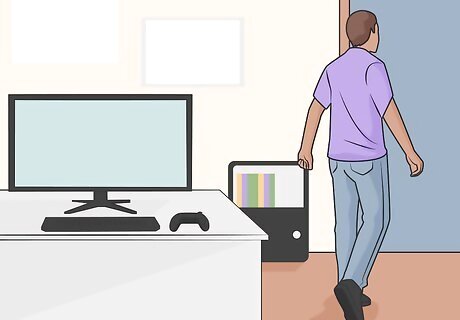
Take a break and stand up every 20 or 30 minutes while gaming. It's true that it's easier to sit than to stand, but that doesn't mean you're not still straining your muscles. Instead of sitting in front of the screen playing a game for hours on end, make it a habit to get up and stretch and move around. If you're likely to forget, set a timer on your phone to remind you. Another thing you can do is get a smaller glass of water and set it beside you. When the glass is empty, you'll have to get up to refill it, so you'll automatically be getting up and moving around.
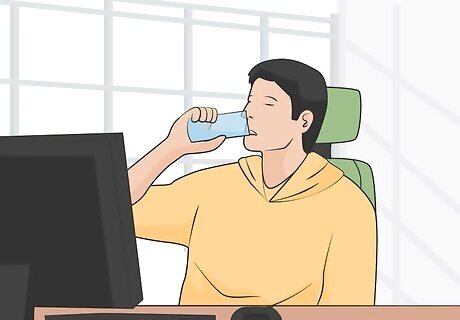
Drink plenty of water to stay well-hydrated. You've probably heard that your body is mostly water — and that's the main reason you should plan on drinking plenty of fluids each day. If you don't like plain water, that's not necessarily a bad thing. You can also get water from other beverages. Just make sure those beverages aren't also loaded with caffeine and sugar, both of which can lead to headaches. According to the National Academies of Sciences, Engineering, and Medicine, adequate daily fluid intake is 15.5 cups (3.7 liters) of fluid for men, 11.5 cups (2.7 liters) for women. That includes water, but also other beverages and the water that you get from your food.

Minimize caffeine while playing video games. Caffeine and gaming go hand-in-hand — especially during marathon sessions — but caffeine can also trigger headaches. While a small amount of caffeine is fine (say, a single cup of coffee or soda every few hours), more than that could lead to overstimulation. With caffeine, you also have to worry about the rebound effect after you come down from the rush. That also puts you at a higher risk of getting a headache.

Limit the time you spend playing high-stress games. Intense games might be more thrilling, but they also put a lot more demands on your mind and body and can lead to headaches. Make it a habit of switching back and forth between a high-stress game and a more relaxing game. For example, you might play a first-person shooter for 20 or 30 minutes, then switch to a more relaxing sim game where you can build something for another 20 or 30 minutes.


















Comments
0 comment